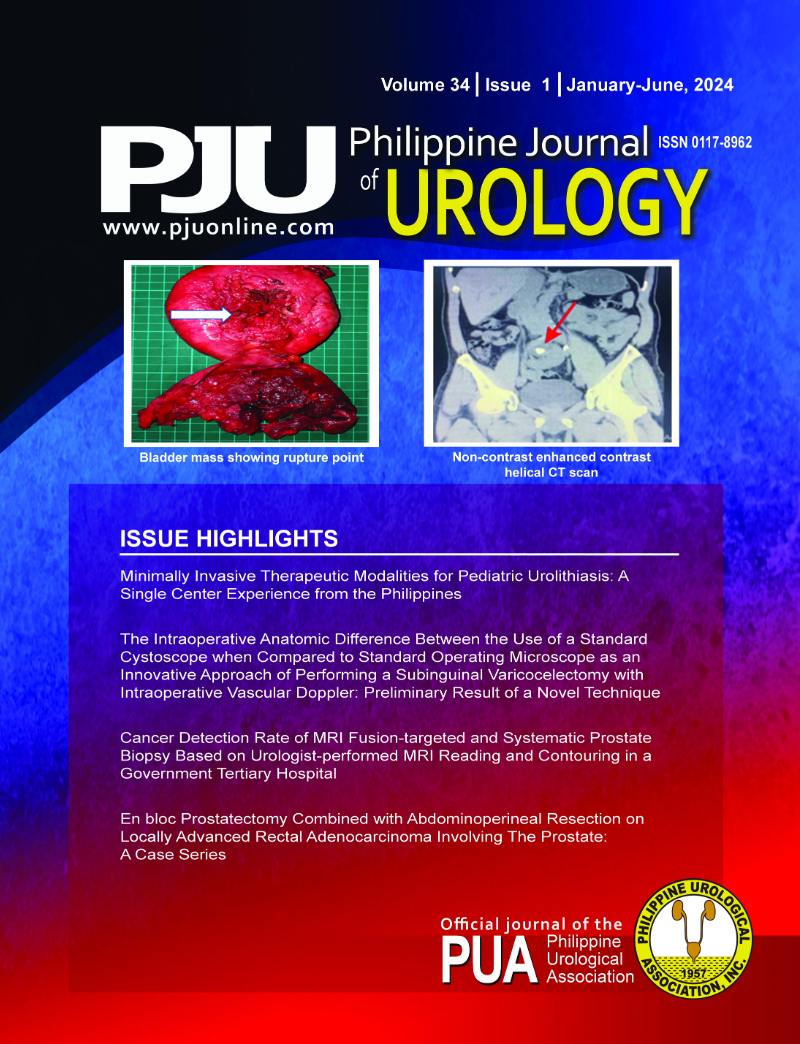Abstract
Objective: The varicocoele exist in approximately 35-40% of primary male factor infertility while two to 10 percent of cases presents with pain.1 Most surgeons favor subinguinal microscopic varicocoelectomy because it offers superior improvement in semen parameters and reproductive outcome with the least complication rate. This study aimed to show an innovative surgical technique in the management of men with varicoceles.
Methods: Subinguinal varicocelectomies were performed by a single surgeon on all patients starting with a standard cystoscope stabilized by a customized mechanical holding system attached to the operating bed. All the presumed vascular channels, vas deferens and lymphatics were isolated and marked with vascular loops and surgical ties. After all the presumed vessels were tagged, the standard operating microscope was brought to the operative field and full microsurgical dissection was carried out.
Results: Ten varicocelectomies were performed on six men with a mean age of 30.5 years. 13 arteries, 84 veins, and 20 lymphatics were identified by the cystoscope while 18 arteries, 93 veins, and 29 lymphatics were identified by the standard operating microscope. Comparing the two modalities, 72%, 90%, and 69% of the arteries, veins, and lymphatics, respectively, were correctly identified by the cystoscope when compared to the latter.
Conclusion: Subinguinal varicocelectomy using a standard cystoscope could be offered as an alternative surgical approach in men with varicoceles as it can identify veins comparable with that of the standard operating microscope. In addition, a standard cystoscope can also identify, to some degree, lymphatics and arteries during surgical dissection. This innovative surgical technique can serve as a valuable option in the treatment of men with varicoceles.

This work is licensed under a Creative Commons Attribution-NonCommercial-NoDerivatives 4.0 International License.
Copyright (c) 2024 Janssen Dion T. Unas, MD, Marlon Martinez, MD, FPUA

